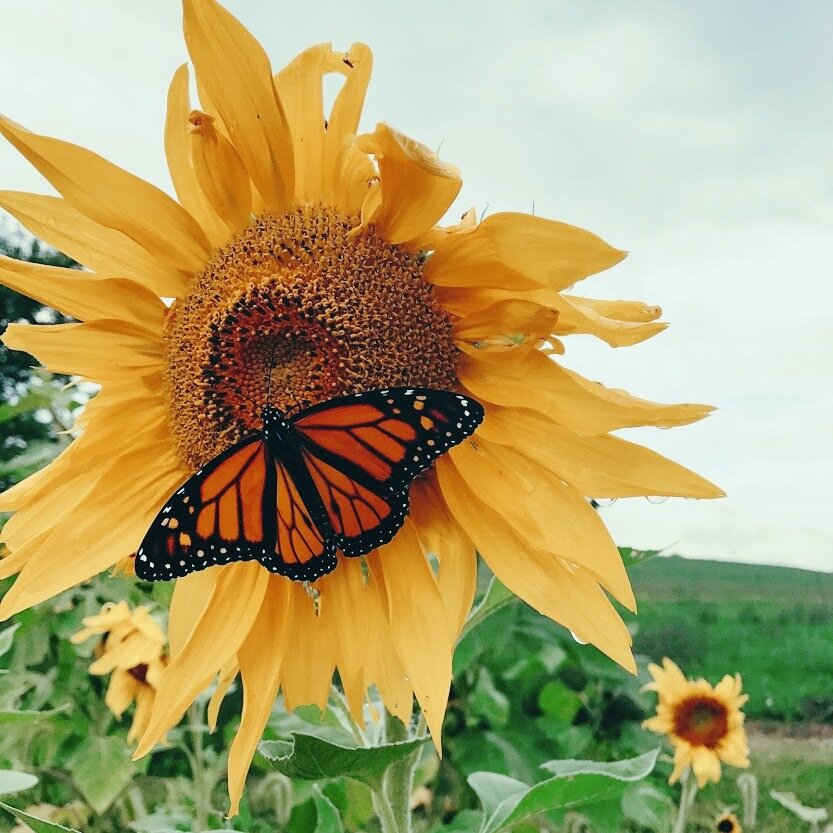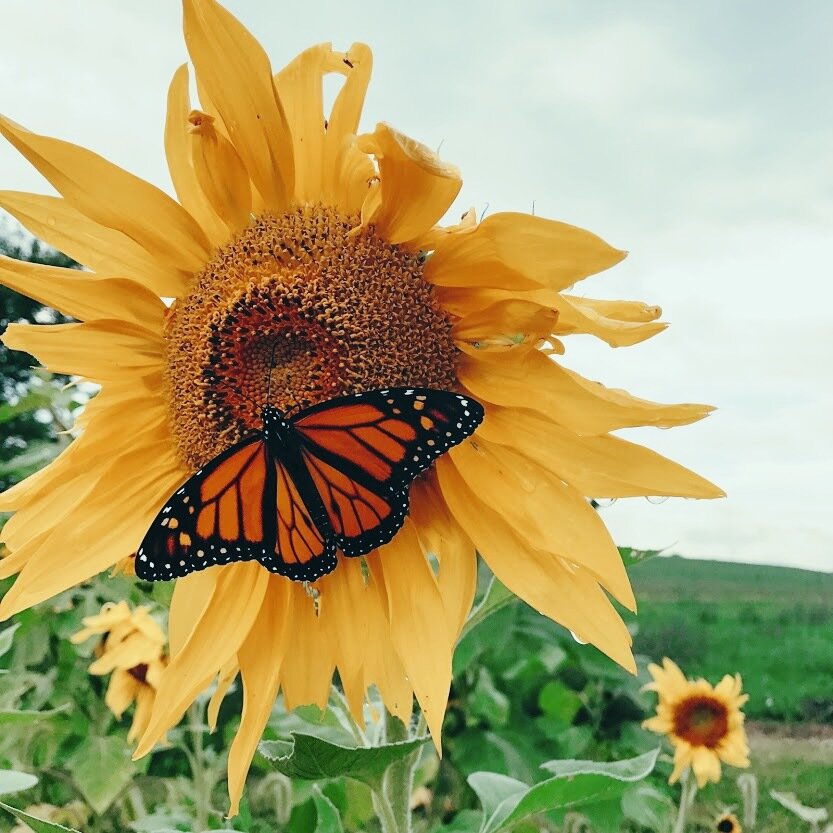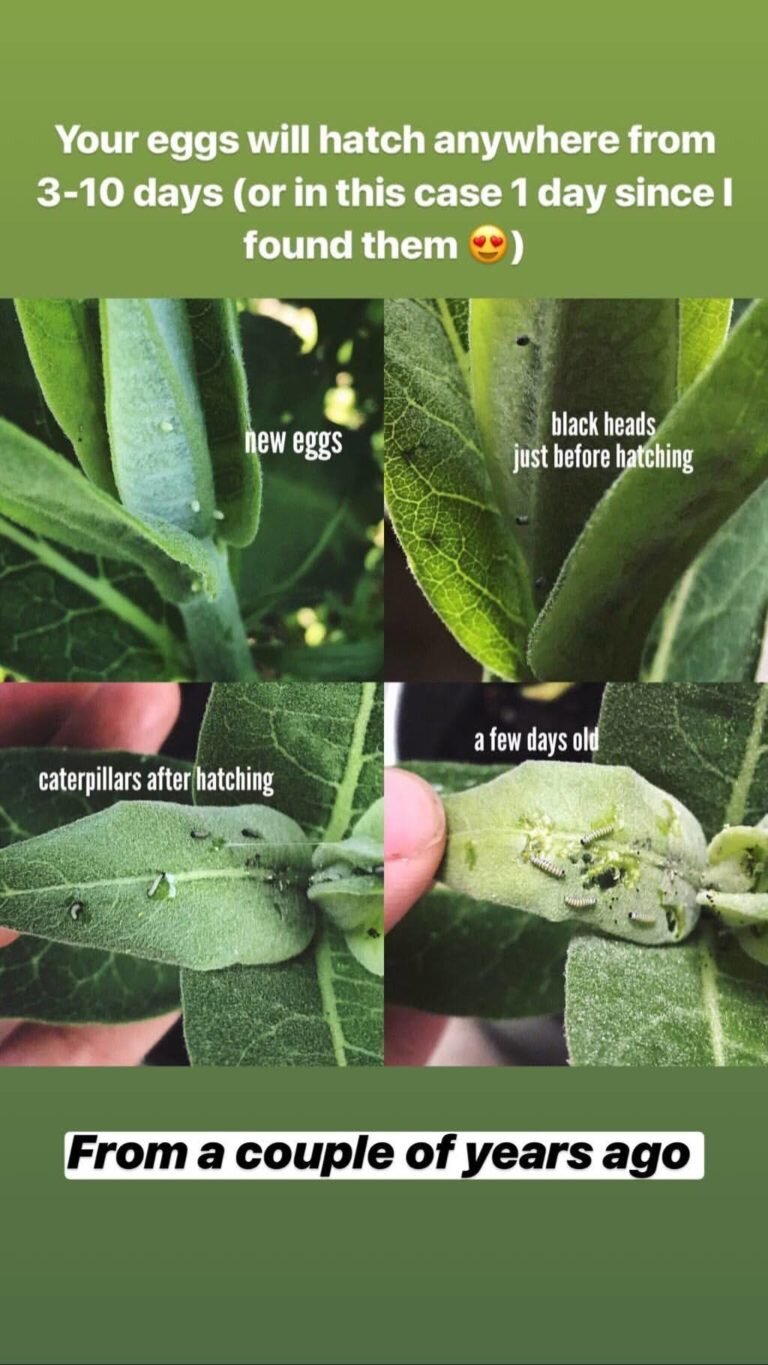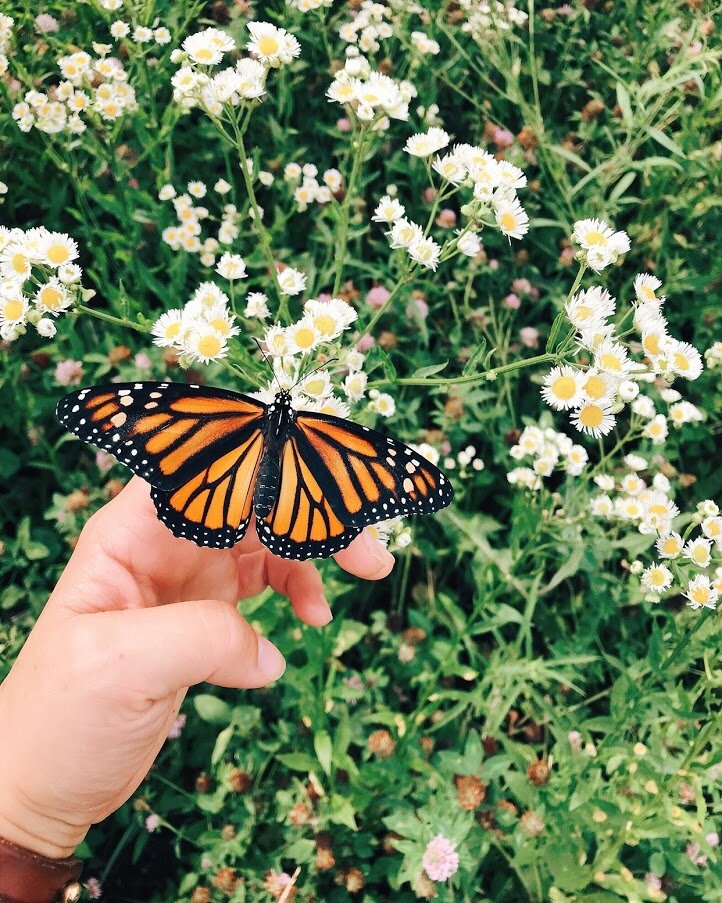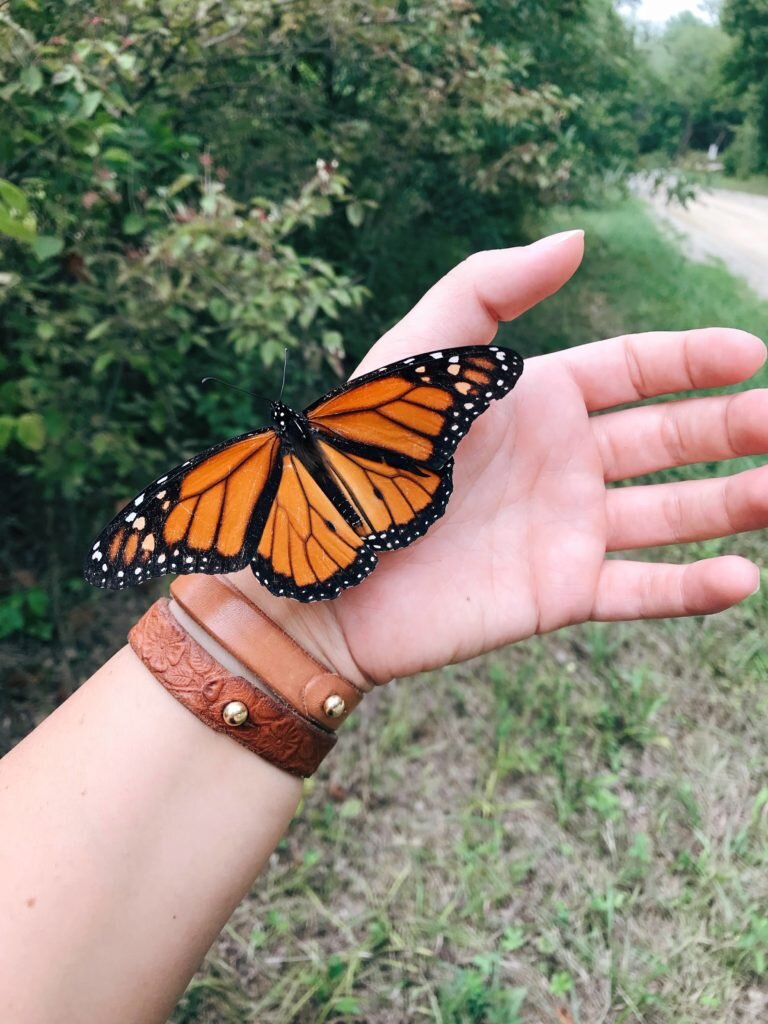I’ve had a love of butterflies since like, ever. I guess my nickname when I was younger was “butterfly”, probably because I was just kind of super weird or something, but also fun to watch? I don’t really know. Anyway, last year I was out looking at our wild blackberry canes and turned around to see a faded Monarch flying around the same few plants.
I thought I was seeing things because April is far too early to be seeing Monarchs in Missouri. But, I got closer and realized that I wasn’t that crazy and that yes, I was seeing a Monarch. She had found milkweed that was only a few inches tall and was quickly moving all around the plants, laying eggs.
She was very faded looking, laying multiple eggs per plant, which I later learned means that there is likely something wrong with the female and she is trying to get as many eggs out as possible. The fading shows that she was an older butterfly. I don’t think it really hit me until later, watching her struggle to fly from plant to plant, laying eggs, what a magical and tragic moment it was; tragical. Literally giving her babies a chance at life even though she was about to lose hers.
So when people ask me how I got started raising monarchs, the answer is that mama Monarch found me. I don’t know if she was asking me to care for her babies, but I feel that she was.
Now before I get all sappy, here are some fun facts:
-
Only one or two out of every 100 caterpillars lives to be an adult butterfly. Isn’t that crazy? It’s a combination of predators, habitat loss, and natural selection for all butterflies, but for monarchs, a lot of it is due to the loss of their habitat and food source; milkweed.
-
Milkweed is the only host plant for Monarch eggs and the only food source for Monarch caterpillars. They literally cannot live on anything else and won’t eat anything else.
-
Monarchs will usually only lay one egg per plant to ensure they have enough food; they will sometimes lay multiple eggs on the same plant if there is a lack of milkweed or the mother is dying, both of which were the case in April last year.
-
If Monarch caterpillars do not have enough milkweed to eat they will eat each other in order to survive.
-
Caterpillars poop. And they poop a lot. It’s called “frass”.
-
You don’t have to live in the country to raise monarchs; you can raise them anywhere!
How to raise Monarch Butterflies for beginners
What you need:
-
Monarch eggs (people ask me if I buy them…I don’t. I literally spend an hour or two every couple of weeks looking for them–more on that later.)
-
Lots of milkweed. No, you’re going to need MORE. LOTS OF MILKWEED. They are very hungry caterpillars.
-
Some sort of enclosure to keep them safe. I’ve seen people use Tupperware with holes poked in it, mesh laundry hampers, and last year I used some old screen and window frames to make an enclosure. And my friend Karlie used picture frames with screen mesh! Whatever you use needs to be breathable, preferably from more than one side. Too much moisture in the enclosure is bad news bears because it breeds bacteria.
-
A spray bottle to mist the plants every day (or every few depending on where you live). This gives the caterpillars some moisture. But really, if you keep your plants in water, there will be enough water in the leaves for them.
-
Newspaper or cardboard for the bottom of the enclosure because it makes it easier to clean out the poop
-
A place to release them; you can do this in your garden, in an old, unused field, in a conservation area, or even release them to the flowers on your porch.
Collecting monarch eggs and milkweed:
Guys, this is seriously so fun, because it’s like a little earth-made scavenger hunt! First, you have to spot the milkweed–if you don’t know what milkweed looks like, have a Google or check out this post that lists twelve native milkweeds for monarchs (it only shows the blossoms, so you might have to Google what the whole plant looks like. Also, the blossoms smell like lilacs). We have common milkweed growing in several different places on our property, and I found swamp milkweed while paddleboarding on my parent’s pond. Then you’ll need to look for eggs. Supposedly they only lay one per plant, but I always found at least three—check the underside of the leaves first as that is where you’re likely to find the eggs, but occasionally they will be on top as well. Be careful because you CAN accidentally brush them off the leaf!
If you don’t have milkweed growing in your yard, you’re likely to find it on the side of the road, growing in ditches, or in old fields. You might be able to find some at your local nursery if you can’t find any in the wild. PLEASE be careful taking milkweed from parks–even if there is milkweed growing if there are no weeds in the grass then the grass has likely been sprayed and the mist can drift to the milkweed and poison it (thus killing your caterpillars).
Be careful to keep the milky milkweed sap away from your eyes—some people even suggest wearing gloves when handling it so you don’t get it on your hands, but I didn’t have any sensitivity to the sap on my skin.
To keep your milkweed from wilting you’ll need to cut the stem at a 45-degree angle (give or take) and make a slit two inches above the cut down to the bottom of the stem. I originally tried keeping my milkweed in pots but had more success keeping them in mason jars with cheesecloth covering the opening—because it’s horrifying when one of your caterpillars falls in.
If you are local to Kansas City, Family Tree Nursery usually has milkweed at the beginning of planting season, sometimes even into the summer.
Hatching your monarch eggs:
Fun fact: nature knows what it’s doing. Like, out of the 40 acres we own, that little monarch mama somehow managed to find milkweed that was only an inch tall because she knew it was the only plant suitable for her babies. So, when it comes to hatching monarch eggs, guess what? You don’t really need to do anything but wait. And that is for real the hardest part, even though they hatch in like 3-5 days.
After three to five days the eggs will start to darken on top–this is the head of the caterpillar. If the egg goes completely dark monitor it for 48 hrs and if nothing happens, squish it because it’s likely a Trichogramma Wasp that lays its eggs inside the monarch egg. Terrifying and disgusting. (see here).
If you don’t see your babies at first, do not panic! Look at the leaves for holes—if you see them, your caterpillar is likely alive and well, just super tiny and staying out of sight. Then your caterpillar is going to eat all the milkweed. You’ve read The Very Hungry Caterpillar, right? These babies are hungry. And they’ll grow to be over 3,000 times their original size.
The chrysalis stage
When your caterpillar is ready to chrysalis, it will usually go to the top of your enclosure and attach itself, then hang in a “J” shape for about 24 hours. Then this amazing thing happens:
